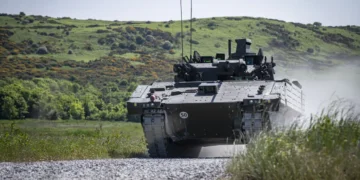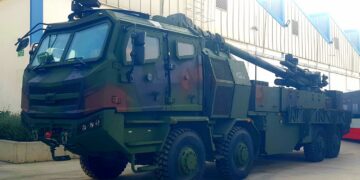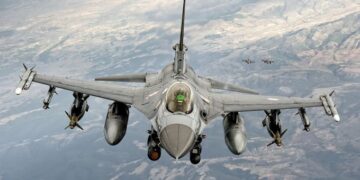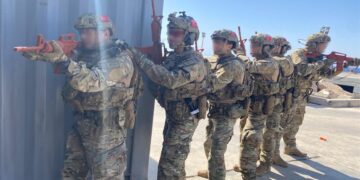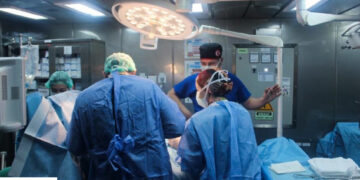The UK Ministry of Defence has announced that the long-awaited Ajax armoured fighting vehicle has achieved Initial Operational Capability (IOC) within the British Army. Built by General Dynamics UK (GDUK) at the company’s facility in Merthyr Tydfil, Mid Glamorgan, the platform is described as one of the most advanced systems in the medium-weight armoured vehicle category.
Marking the first new armoured fighting vehicle to enter service with the British Army in nearly 30 years—since the introduction of the Challenger 2—Ajax underwent an extensive and demanding testing process before reaching IOC.
Ajax Armoured Fighting Vehicle: Technical Features and Test Processes
Before achieving operational readiness, Ajax demonstrated its durability and performance under a wide range of challenging conditions.
During testing:
• Over 20,000 rounds were fired from its 40mm automatic cannon.
• It underwent hot and cold climate trials during overseas training.
• Its firing-on-the-move capabilities were successfully tested.
• The vehicle completed over 42,000 kilometres in battlefield mission simulations — roughly equivalent to driving around the Earth’s circumference.
Core System Capabilities
Ajax has been designed as a family of vehicles, comprising 589 variants in total. Its key technical specifications include:
• Speed: Capable of reaching 70 km/h.
• Weapon System: Equipped with a high-firepower 40mm CT40 cannon.
• Digital Equipment: Advanced sensor suite and 360° situational awareness systems.
• Protection: Modular armour and an advanced suspension system provide exceptional mobility and crew protection.
Defence Industry as a Driver of Economic Growth
The UK government continues to position the defence sector as a key pillar of national economic growth. A recent Ministry of Defence announcement highlighted major export contracts worth £18 billion, including projects such as Type 26 frigates for Norway and Typhoon fighter aircraft for Türkiye.
The Ajax programme stands as a cornerstone of the UK’s defence industrial strategy—focusing on domestic production and the modernisation of the British Army’s armoured capabilities.




